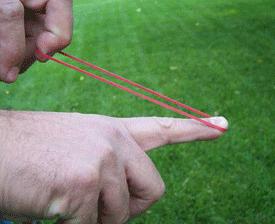The word "energy" comes from the Greek language and has the meaning of "action", "activity". The concept itself was first introduced by the English physicist T. Jung at the beginning of the 19th century. By "energy" is meant the ability of the body possessing this property to do work. The body is capable of doing the greater work, the more energy it possesses. There are several types of it: internal, electrical, nuclear and mechanical energy. The latter is more common in our daily lives. A man from ancient times has learned to adapt it to his needs, transforming it into mechanical work with the help of a variety of devices and designs. We can also convert some forms of energy into others.

In the framework of mechanics (one of the branches of physics), mechanical energy is a physical quantity that characterizes the ability of a system (body) to perform mechanical work. Therefore, an indicator of the presence of this type of energy is the presence of a certain speed of the body, with which it can do the job.
Types of mechanical energy: kinetic and potential. In each case, kinetic energy is a scalar quantity that is the sum of the kinetic energies of all the material points that make up a particular system. Whereas the potential energy of a single body (system of bodies) depends on the relative position of its (their) parts within the framework of an external force field. An indicator of changes in potential energy is perfect work.
A body possesses kinetic energy if it is in motion (it can be called energy of motion otherwise), and potential if it is raised above the surface of the earth to some height (this is the interaction energy). Measured mechanical energy (like other types) in Joules (J).
To find the energy that the body possesses, you need to find the work spent on transferring this body to the current state from the zero state (when the energy of the body is equal to zero). The following are formulas according to which mechanical energy and its types can be determined:
- kinetic - Ek = mV 2/2;
- potential - Ep = mgh.
In the formulas: m is the mass of the body, V is the speed of its translational motion, g is the acceleration of fall, h is the height by which the body is raised above the surface of the earth.
Finding complete mechanical energy for a system of bodies of bodies consists in revealing the sum of its potential and kinetic components.
Examples of how mechanical energy can be used by man are the tools invented in ancient times (knife, spear, etc.), and the most modern watches, airplanes, and other mechanisms. The sources of this type of energy and the work it performs can be the forces of nature (wind, sea
tides, the flow of rivers) and the physical efforts of humans or animals.
Today, very often the mechanical operation of systems (for example, the energy of a rotating shaft) is subject to subsequent transformation in the production of electrical energy, for which current generators are used. Many devices (engines) have been developed that are capable of performing the continuous transformation of the potential of the working fluid into mechanical energy.
There is a physical law of conservation of it, according to which in a closed system of bodies, where there is no action of friction and resistance forces, the constant will be the sum of both types of it (Ek and Ep) of all its constituent bodies. Such a system is ideal, but in reality such conditions cannot be achieved.